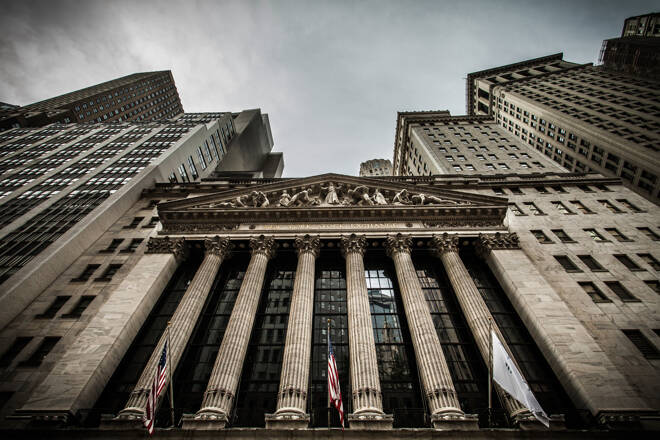Advertisement
Advertisement
Here’s What The January Barometer Says About S&P 500’s Performance in 2022
By:
As goes January, so goes the year. Here’s how the January Barometer may signal the price performance for S&P 500 in 2022 when interpreting with Wyckoff trading method.
In January 2022, S&P 500 (SPX) fell more than 5%, which was the worst January since 2009. According to Stock Trader’s Almanac 2022, a down January is not a bullish signal for the stock market. Since 1950, every down January was followed by increasing of volatility with an average of -2.1% return for the year. The performance of S&P 500 from the close of January to the low of the year is -13% on average since 1950 (except for 2021).
January Barometer vs. SPX Price Structure
In order to better interpret the effect of the January Barometer on S&P 500 (SPX), take a look at the monthly chart of SPX below.
Since the January Barometer is a measure based on the statistics, it makes more sense to interpret together with the price structure to better predict the price performance of S&P 500 in 2022.
Since 2000, there are 13 down January (as highlighted in orange). The down January in 2022 potentially represents a change of character, which essentially stops the uptrend since the COVID-19 low in March 2020. This could suggest a consolidation via a trading range with the directional bias to be determined at the later stage using price action analysis or a reversal.
Out of these 13 down January since 2000, the context of the current market environment is very similar to 2010’s. In 2010 and 2022, the background of the SPX was an uptrend and the down January acted as a change of character bar stopping the uptrend. The trading range in 2010 came with increasing of volatility on both sides together with expansion of volume. SPX only left the trading range in September 2010 and emerged into another up trend.
S&P 500 Price Prediction with Wyckoff Method
Let’s analyze the S&P 500 E-mini Futures to predict how the price will unfold base on the volume and the characteristics of the price movement.
At the beginning of January 2022, S&P 500 had a false breakout followed by a sharp selloff formed a selling climax (SC) on 24 January 2022. The next 4 days showed no follow through to the downside despite exceptionally high volume suggested presence of demand. These were the tell-tale signs to anticipate the automatic rally (AR) started last week, as illustrated in my live session video where you will find out how to interpret the volume as supply and demand in conjunction with the price action before the rally starts.
The rally stalled at the resistance area 4480-4600 with shortening of the thrust to the upside suggested exhaustion of the demand. This was confirmed by a pullback on 3 February 2022. The hammer bar on 4 February 2022 with increasing of volume suggested a test of the swing high near 4600.
Based on the short-term price action, I anticipate an attempt to test 4600. On a longer-term perspective based on Wyckoff phase analysis, a down wave is likely to test the selling climax’s low near 4200. A trading range between 4200-4600 is likely the case for S&P 500 in 2022.
Despite the directional bias is to the downside based on the market breadth and the price action, volatility is expected to remain high on both sides hence it is not uncommon to experience whipsaw in both directions.
Majority of the laggards hit the 52-weeks low are way oversold and overextended. It will offer better reward to risk ratio to wait for a weak rally to test of the resistance before initiating new short positions. Oil related stocks still outperform while riding the strength in crude oil, there is likely upside continuation ahead after a consolidation or a pullback. Visit TradePrecise.com to get more market insights in email for free.
About the Author
Ming Jong Teycontributor
Ming Jong Tey is a trader who specializing in price action trading with Wyckoff analysis. He is active in swing trading and position trading of stocks in US and Malaysia and day trading in S&P 500 E-mini futures.
Advertisement
